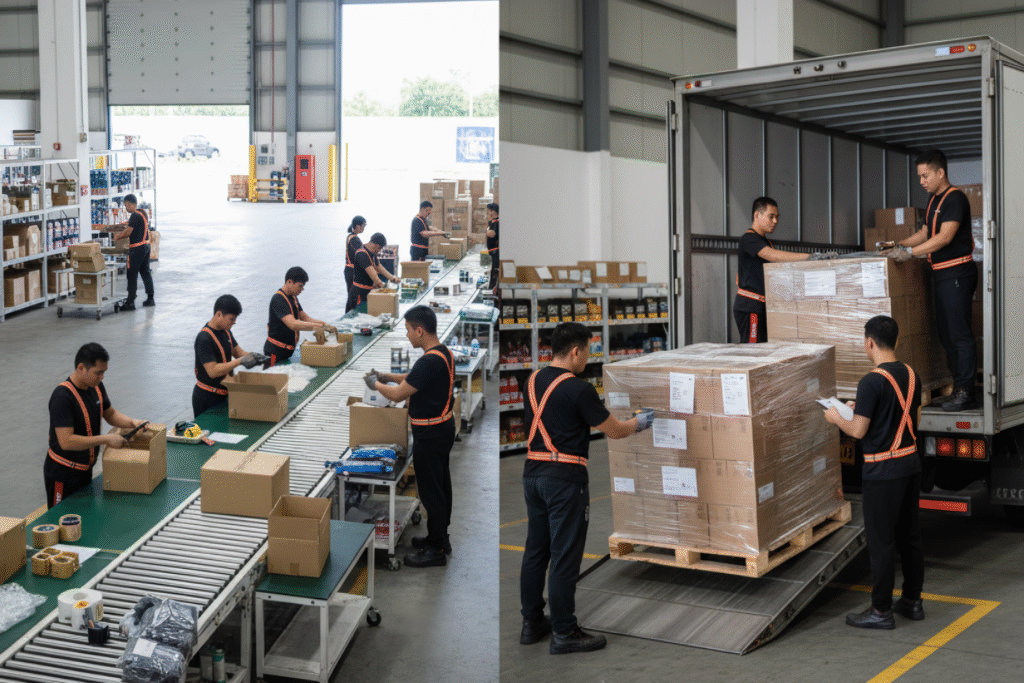Running a business with inventory requires more than just storing products. Warehouse management ensures that each item is tracked, handled, and shipped efficiently. This step-by-step guide walks you through every stage of warehouse operations, helping your business in Valenzuela maintain smooth and accurate processes.
Key Takeaways
Running a storage facility involves overseeing all operations, from receiving and storing products to picking, packing, and shipping them. Efficient processes help businesses of any size maintain accuracy, reduce costs, and meet delivery timelines consistently.
A well-organized facility prevents delays, inventory mistakes, and unnecessary expenses. Companies that implement structured processes often see faster order fulfillment and smoother day-to-day operations.
Managing a warehouse effectively goes beyond storing items. It requires coordinating staff, controlling inventory, and leveraging technology to ensure smooth operations at every stage.

Understanding core operations is vital for efficiency and reliability. Below are the essential stages involved in handling inventory and fulfilling orders:
Receiving inventory is the first step in maintaining an accurate warehouse. It includes:
Proper receiving prevents discrepancies, avoids misplaced products, and ensures that inventory records remain accurate from the start.
Once inventory is received, it must be stored efficiently:
An organized storage system reduces the time spent searching for products and lowers the risk of damage.
Accurate inventory management prevents lost sales, overstocking, and stockouts. Key practices include:
Picking and packing prepare items for shipment and directly impact order accuracy:
Efficient picking and packing reduce errors, enhance productivity, and improve customer satisfaction.
The final stage of warehouse operations focuses on getting products to customers efficiently. This includes:
Efficient shipping ensures timely deliveries and strengthens customer trust.

A WMS helps streamline day-to-day operations while improving accuracy. Its key benefits include:
Choosing the right WMS depends on business size, product types, and shipment volume. For small e-commerce businesses, cloud-based WMS options offer affordability and flexibility.
Even with careful planning, businesses often face operational challenges.
Addressing these challenges consistently ensures reliable performance and reduces operational risks.

Efficient operations in a storage facility impact several key areas:
For businesses in Metro Manila, traffic and logistical challenges make well-managed warehouses essential for meeting delivery expectations.
Q1: How to choose the right warehouse layout?
Consider product type, storage method, picking frequency, and workflow efficiency.
Q2: What are the most common operational mistakes in warehouses?
Ignoring proper storage, failing to track inventory, and poor staff training are common errors.
Q3: How often should stock counts be performed?
Monthly or quarterly counts are recommended, depending on inventory turnover.
Q4: How can technology help improve warehouse operations?
Technology like WMS, barcode scanners, and analytics software improves accuracy and speed.
Q5: What is the ideal warehouse size for a small business?
It depends on inventory volume, product types, and expected growth, but flexible space is recommended.
Q6: How can picking errors be reduced in a warehouse?
Implement zone or batch picking, train staff, and use barcode or RFID tracking.
Efficient warehouse processes are the foundation of smooth operations for any business handling physical products. By following step-by-step procedures, from receiving inventory to shipping orders, and using tools like a Warehouse Management System, errors can be minimized, delivery times improved, and customer satisfaction increased.
Focusing on a well-organized warehouse process ensures that operations remain consistent, costs are controlled, and businesses can handle higher order volumes without added stress.
Inspire E-Commerce Solutions Inc.
Warehouse 4 & 5, C Teknik Industrial, 143 P. Gregorio Street, Valenzuela,
1442 Metro Manila
inspiresolutions.asia